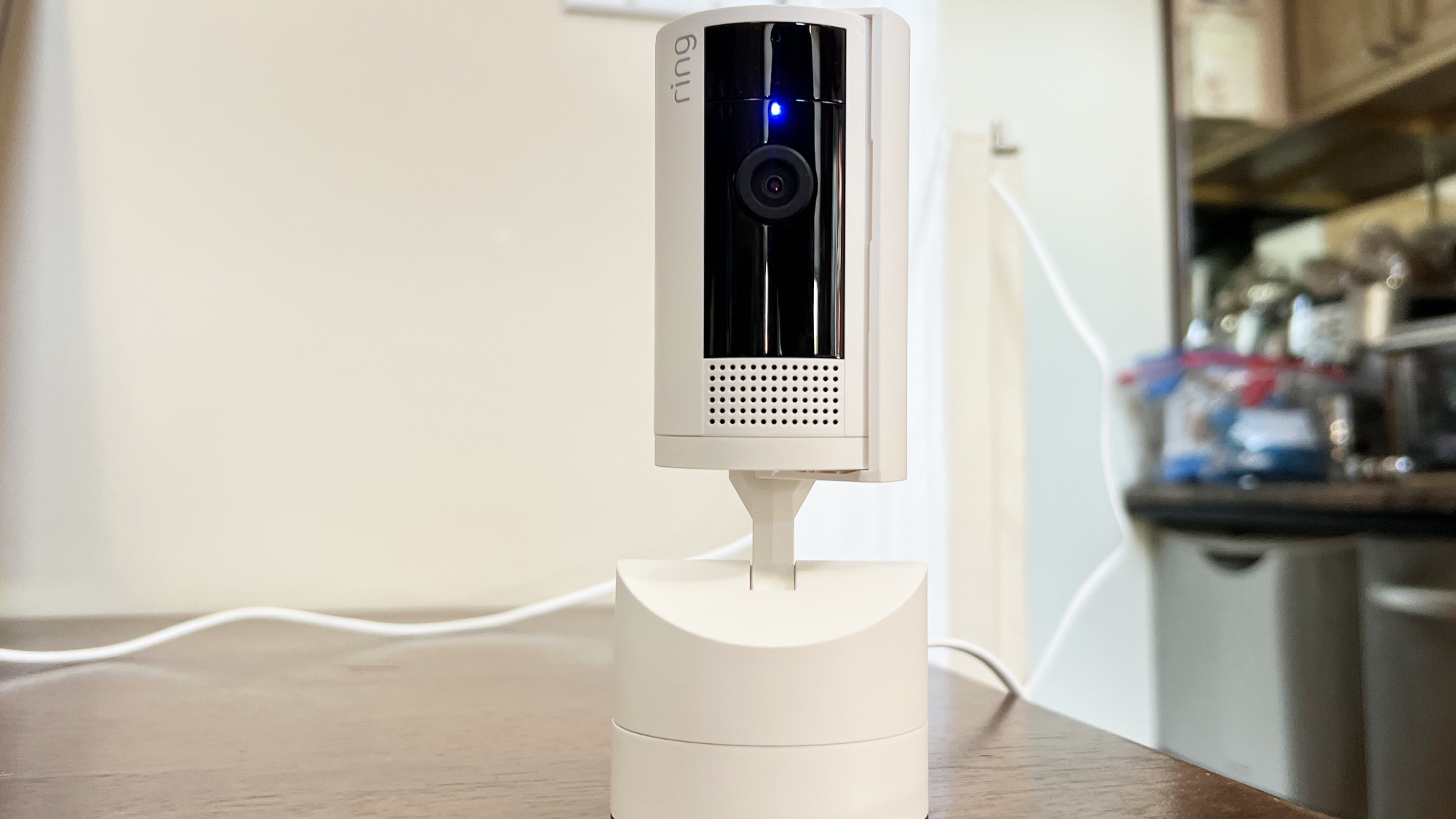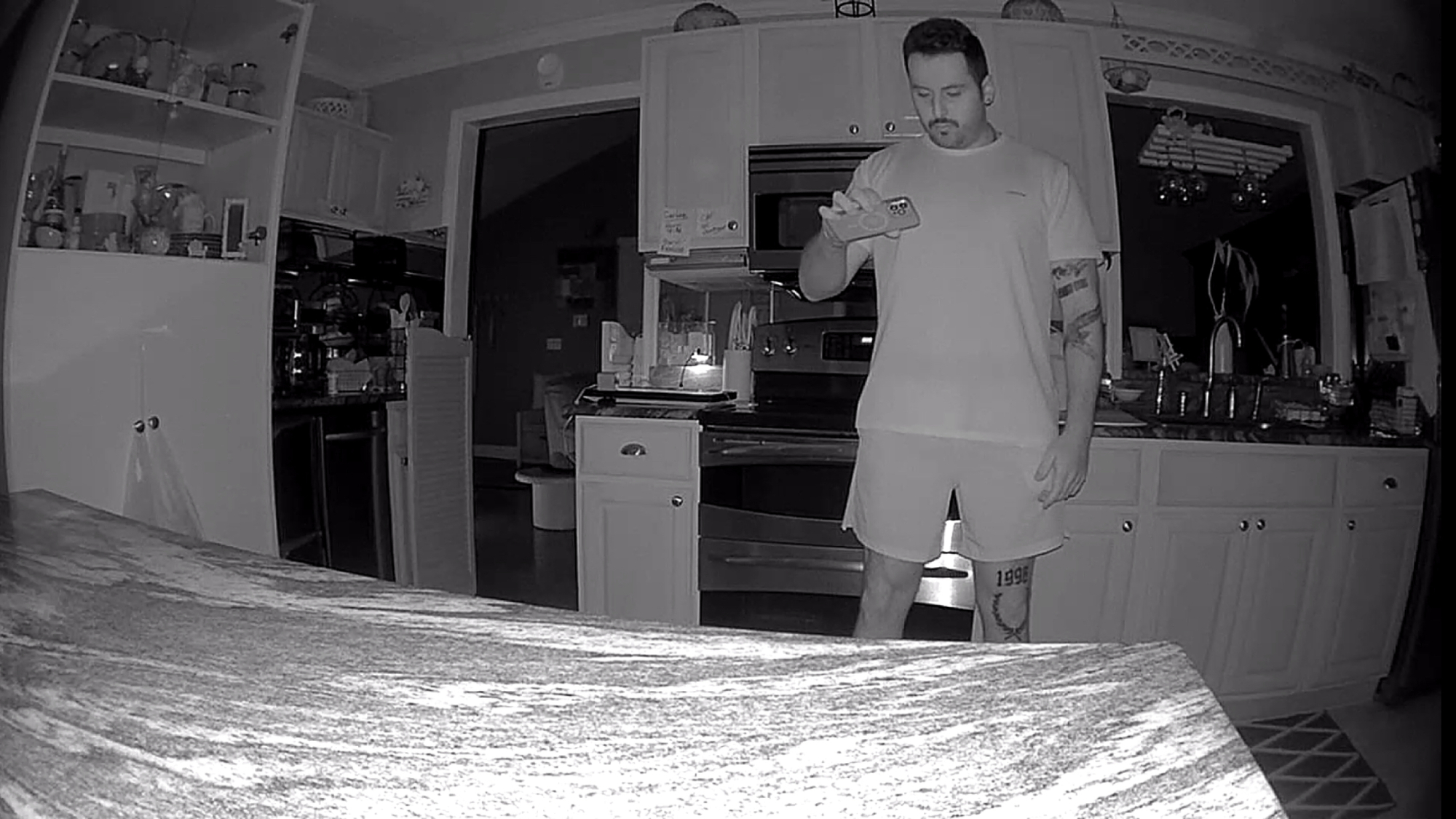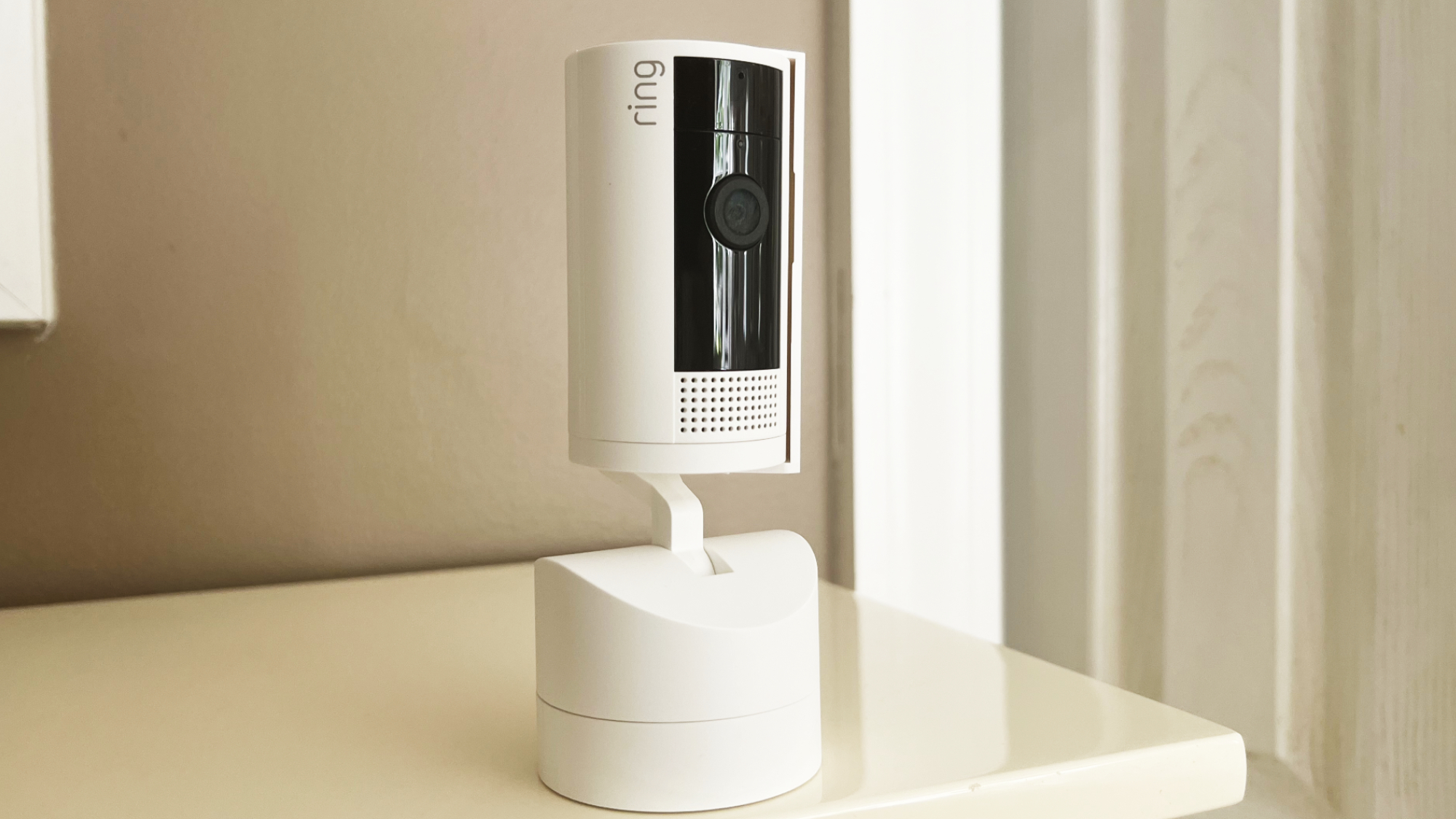Tom's Guide Verdict
Ring’s Pan-Tilt Indoor Cam is a great fit in any space and captures smooth, stutter-free HD video. Its most helpful features — like video storage and person detection — are locked behind a subscription. But if you’re already a Ring device owner it’s worth checking out for a full 360 degrees of coverage.
Pros
- +
Compact, stylish design
- +
Smooth HD video without delays
- +
Color night vision
- +
Crisp two-way intercom system
Cons
- -
No subject tracking or auto-follow (yet)
- -
Basic features locked behind subscription
Why you can trust Tom's Guide
Dimensions: 2.4 x 5.8 inches
Resolution: 1080p with color night vision
Field of view: 169º atop a rotating motorized base
Person detection: Yes
Works with: Ring app and Amazon Alexa
Ring makes some of the best home security cameras we’ve tested. They’re sharp, reliable, and integrate nicely into advanced Alexa and Ring smart home routines. The brand’s pro-level focus is a double-edged sword — you get premium hardware and features (like PiP on Alexa displays) but you’ll have to pay a subscription for features as basic as video recording. And keep in mind that this subscription can see price hikes from time to time.
The Ring Pan & Tilt Cam is exciting but feels like a long-overdue addition to the lineup. It pivots along its base smoothly and quietly to add 360 degrees of coverage as it spins around. Plus, it offers color night vision. But $80 for a basic 1080p resolution is steep, especially when competitors like Eufy and Tapo offer higher quality cameras for less. Those brands also support local storage and don’t lock core functionality behind a subscription. So where does the Ring Indoor stack up? Read on to find out.
Ring Pan-Tilt Indoor Cam: Price and availability
The Ring Pan Tilt Indoor Cam was released in June 2024 and costs $79.99. That’s smack dab in the middle of the budget Wyze Cam Pan V3 ($40, Amazon) and our pick for the best 4K indoor camera, the Eufy S350 Pan Tilt ($129, Amazon). Both offer more features like automatic subject tracking and local storage without a subscription. The Wyze Cam shares the same 1080p resolution while the Eufy S350 has a class-leading 4K image but lacks color night vision.
Ring Pan-Tilt Indoor Cam: Design
Ring is essentially the Apple of the camera world. Their devices are undeniably stylish and while they might arrive late to the party in a product category, they perfect it, as seen with the Pan Tilt Cam. This lightweight camera moves gracefully with a silent and smooth motion. Its compact 2.4 x 5.8-inch body doesn’t take up much space and comes in black or white. The thin head and base don’t look creepy and robotic so it fits into any room you place it in.

There’s not much to Ring’s Pan-Tilt indoor cam except the lens in the center, USB-C power port on the back and little dots for the microphone and speakers. Without local storage capabilities, you won’t find a MicroSD card slot. While it has a tiny LED status light on the front there’s no built-in spotlight. I appreciate the physical privacy cover which snaps right on but I do wish you could kill the camera remotely.
Other manufacturers work better ergonomics into their designs, be it something as simple as a weatherproof body or an extendable magnetized base for easy mounting and angles. You can either place or mount this kit but it’s going to require a semi-permanent wall or ceiling installation.
Ring Pan-Tilt Indoor Cam: Image and audio performance
After years of setting up security cameras, I find Ring’s process to be the most effortless. You simply open the app, add a new device, scan a QR code, name the camera, then input your Wi-Fi info. That’s why I was surprised when the Pan gave me a tough time during setup. On an uncrowded 2.4GHz network it failed to connect for my first few times even when resetting the router first and placing it along different spots in my home.
Once connected I found controlling and calibrating the camera natural with virtually no delay in movement from the time I pressed down a directional button. You see plenty of action from the front and sides while the on-screen directional keys are snappy. However, the 1080p picture is just average. From blown-out lighting coming through my kitchen’s glass window to mediocre colors, I wasn’t amazed by its daylight performance, but didn’t find it awful either.




Compared to our favorite indoor camera the Eufy S350 Pan & Tilt, Eufy’s camera blows it out of the water with sharp text and night vision. In the gallery above you can see the Ring’s image quality up first; look at the text on the paper I’m holding up, the lattice above my head, and the overall textures in the room. The Eufy camera brings out the distinct X shape in the lattice and can even make out the text and tattoo on my arm clearly. Plus it uses a MicroSD card for local storage so you don’t need a subscription to store clips.
Ring’s wide angle lens is super helpful for scanning more of your space at once — I could see if someone came in from the living room door or entered my kitchen from the camera’s static “home” position. However, the fisheye effect is noticeable in the bowing at the top and bottom of the picture. This distortion becomes more apparent while you rotate the camera. The Pan-Tilt clearly captures activity but you won’t see small finer details — like the lines between each plank of my hardwood floors or distinct facial features like a line slit in an eyebrow. There is one benefit to this lower resolution as you’re not using a ton of bandwidth like with 4K security cameras, so even on an older router it’s still able to deliver smooth footage.
One area where this camera excels is its two-way talk system. Its speakers are clear and its microphone picks up a lifelike sound from the other party. Conversations feel natural and there’s no tinny speakerphone distortion effect which you find on most cameras.
Ring Pan-Tilt Indoor Cam: App

The Ring app is designed to manage multiple smart home devices beyond cameras such as smart sprinklers and lights. You’ll spend most of your time in the dashboard which shows a snapshot of your camera’s live view, quick access to your history, as well as smart home device widgets at the top. Click on your camera to enter the live video feed with controls located directly below (or atop the video in landscape mode). From here you can turn on the intercom, steer its view around like a drone, and activate the siren.
However, you have to subscribe to both record and export your clips and you can’t screenshot from recorded footage. Add in the lack of auto-tracking and you just have a standard indoor camera that can look around when you need it to but not at all times. With that said, Ring has auto-tracking planned for an upcoming update.
You can adjust device settings, create privacy zones and adjust the camera’s sensitivity levels by clicking into the advanced settings menu indicated by an ellipsis in the top right corner of the live view. I appreciate that Ring keeps things simple and stuffs all the extras like individual device controls and plan management into a sandwich menu in the top left corner of the home screen. Overall, it’s clean and easy to navigate with light nudges to subscribe or expand your Ring ecosystem with new device types.
Ring Pan-Tilt Indoor Cam: Smart home integration

Amazon owns Ring which means this camera integrates into the Alexa smart home platform easily. I have it set up to announce motion announcements on my Echo smart speakers and can pull up live video on my Echo Show 15 or Fire TV. Ring’s smart devices make scheduling your gadgets and creating automation incredibly easy. For example, if it detects motion it can tell other cameras in the vicinity to start recording or turn on your smart lights.
Ring Pan-Tilt Indoor Cam: Subscription fees
Ring’s hardware locks essential features like video recording and cloud storage behind a paywall. You can use it without paying the monthly fee but your experience will be limited to basic motion notifications and live video access. Plans start from $5 per month for a single camera and $10 for all of the Ring cameras at your home. This will net you 180 days of video storage, advanced features like picture-in-picture, and snapshot capture so you can see what happens during the day between motion events. Your subscription status also impacts your app experience as you’ll only get basic notifications and lose person detection if you’re a free user.
Ring Pan-Tilt Indoor Cam: Verdict
If you’re already invested in the Ring Protect plan then the Pan and Tilt indoor camera is a solid addition to your lineup. In the grand scheme of things, $80 is a lot for a 1080p resolution picture. Factor in the need for a subscription to save your clips and it’s hard to recommend to anyone who isn’t already a Ring user.
Ring’s hardware is of high quality and if the company delivers on the promised auto-tracking feature update, then this could be a more useful device. But, there are cheaper and more capable options already on the market that offer cruise patrol modes as well as subject tracking out the gate.

Hunter Fenollol is a Senior Editor for Tom’s Guide. He specializes in smart home gadgets and appliances. Prior to joining the team, Hunter reviewed computers, wearables, and mixed reality gear for publications that include CNN Underscored, Popular Mechanics, and Laptop Magazine. When he’s not testing out the latest cooking gadgets, you can likely find him playing a round of golf or out with friends feeding his paycheck to a QuickHit slot machine. Hunter started his career as an intern at Tom’s Guide back in 2019 while in college. He graduated from Long Island University Post with a degree in Communications and minor in Advertising. He has been vlogging ever since the iPhone 4 took front-facing cameras mainstream.

